Subutex vs Suboxone: What’s the Difference?
What is Subutex?
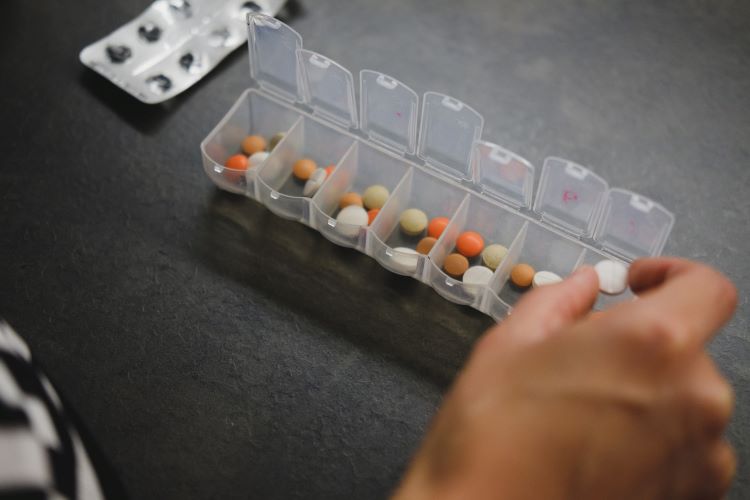
Subutex is a brand name for the drug buprenorphine, which is an opioid partial agonist (an opioid that activates certain receptors in the brain). It is used to treat opioid use disorder.
It does this by reducing the likelihood of a patient abusing opioids, reducing withdrawal symptoms and cravings to combat dependency, and reducing the severity of overdose.
Patients consume Subutex by placing it under the tongue and waiting for it to dissolve, which can take 5-10 minutes in total.
What is Suboxone?
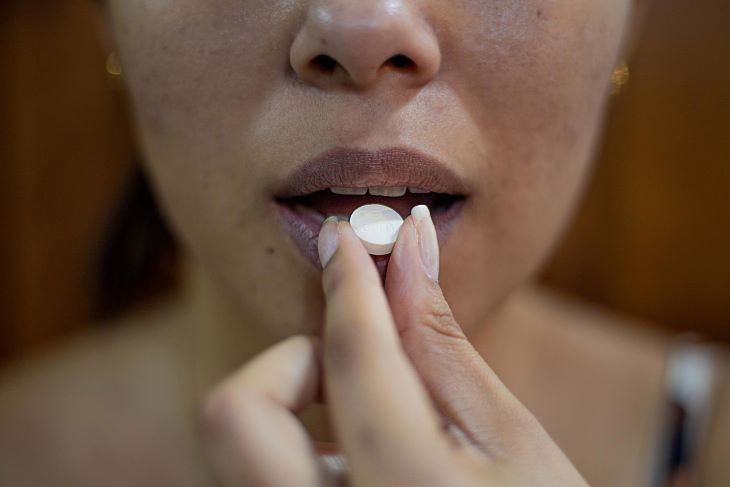
Suboxone is a drug made up of buprenorphine and naloxone. Just like Subutex, Suboxone is also used to treat opioid use disorder. It serves the same purpose of preventing dependency and reducing withdrawal symptoms.
Suboxone presents as an oral film that can be placed between the gums and cheek, or under the tongue, before it is dissolves and takes effect.
What are Opioids & What is Opioid Use Disorder?
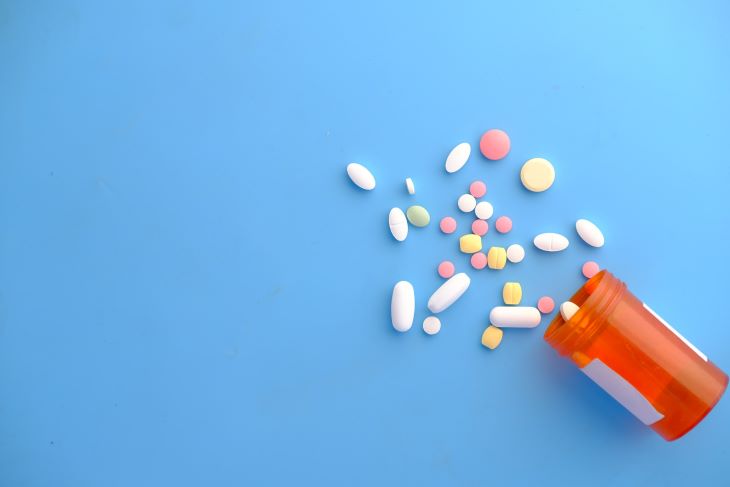
Before we begin to compare Subutex and Suboxone, we need to understand what opioids are, what opioid disorder is, and how it affects people in the UK.
Opioids (or narcotics) are drugs that are used to treat pain in a healthcare setting, but they are also abused due to their ability to trigger endorphins and make users feel euphoric. Opioids come from the opium poppy plant.
The science behind opioids is that they attach to opioid receptors on the brain’s nerve cells, the gut, the spinal cord, and elsewhere, and block pain messages sent from the brain.
Some examples of opioids (which can be natural or synthetic) are: codeine, hydrocodone, oxycodone, hydromorphone, oxymorphone, tramadol, heroin, fentanyl, morphine, and of course, buprenorphine.
Opioid use disorder occurs when an individual becomes dependent on opioids. This often leads to something called tolerance, which is when the user does not experience the same ‘high’ from the same dose of opioids anymore, and therefore they may seek out higher doses to satisfy their cravings.
Another significant part of opioid use disorder is withdrawal; when someone is addicted to opioids, they will experience physical (and sometimes psychological) symptoms when they refrain from using opioids. This can discourage them from getting sober.
In terms of the prevalence of opioids in the UK, we know that prescriptions for opioids doubled from 1998 to 2016, demonstrating the increasing popularity of these drugs (1).
People with chronic illness are more likely to engage in illegal opioid use in the UK. 8.5% of these people admitted to misusing prescription-only painkillers in the past year, compared to only 4.8% of people without chronic illness (2).
Younger people are also more likely to fall victim to opioid use. 4.9% of 25-59 year olds have misused a prescription-only painkiller in the last year, but the figure for 16-24 year olds is notably higher, at 7.2% (3).
People with opioid use disorder in the UK can have a home detox, outpatient treatment, or inpatient treatment, and they can be prescribed buprenorphine or methadone hydrochloride (4).
Subutex Vs Suboxone: How are they Similar?

As we have discussed, buprenorphine is in both Subutex and Suboxone, which means both of these drugs have a similar effect on people with opioid use disorder.
Another similarity between Subutex and Suboxone is that they have the ‘ceiling effect’.
This means that when patients withdraw from opioids using either one of these medications, they are unlikely to experience a ‘high’, though they may feel plenty of relief as the uncomfortable symptoms of addiction slowly disappear.
Subutex Vs Suboxone: What’s the Difference?
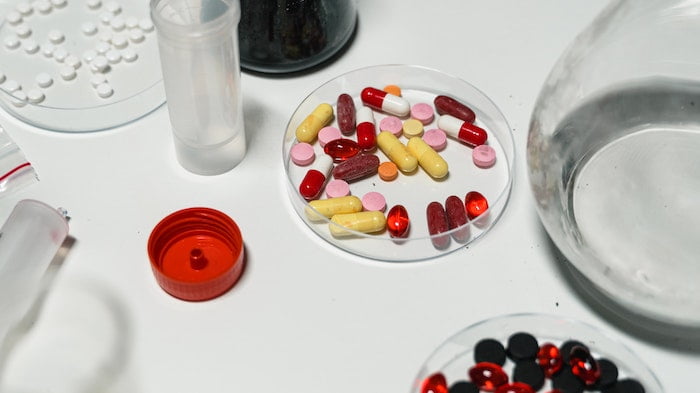
The most obvious difference between Subutex and Suboxone is that the former is made up of 100% buprenorphine, whereas the latter also features naloxone. Suboxone is made up of 80% buprenorphine and 20% naloxone.
This means that Suboxone tends to work better for someone with a severe addiction, as taking the two substances together reduces the risk of continued drug use.
With regards to how both drugs are taken, Suboxone is slightly more versatile. Both can come in tablet form that goes under the tongue, but Suboxone can also be given as a film that melts under the tongue.
Finally, the side effects of Subutex and Suboxone can be different, and we will explain this in greater detail further in the article.
Subutex Vs Suboxone: What is their History?
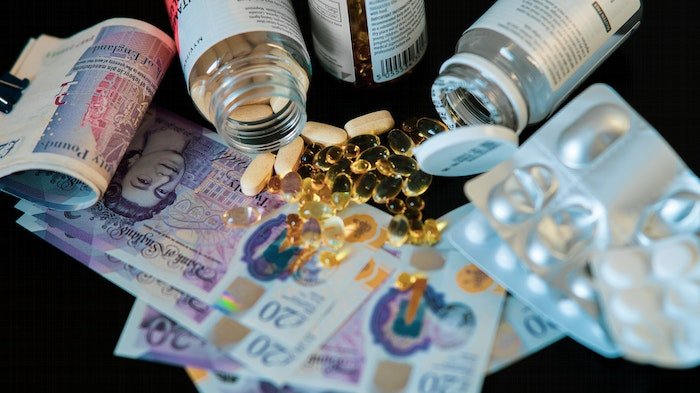
Below, we outline some historical facts about these two substances:
History of Buprenorphine
Buprenorphine, in general, was introduced in 1966, after two failed attempts at the home products business, Reckitt and Colman.
The goal was to produce a drug that targeted opioid use but with a more complex structure than morphine.
It was not until the 1990s that buprenorphine began to be used therapeutically.
History of Subutex
In 1995, Subutex was released in France by the multinational consumer goods company, Reckitt.
At this time, there was an AIDS epidemic among people who were injecting heroin in France, and it was hoped that Subutex would help to combat this.
By 2022, Subutex had been approved by the FDA in the United States. However, by 2012, the drug had already stopped being produced. While it was effective in some cases, it was abused by some patients, which created further issues.
History of Suboxone
Suboxone was approved by the FDA in 2002. This drug was marketed as a treatment for opioid use disorder with a low abuse potential (unlike Subutex).
By 2018, Suboxone was widely available for a lower cost, as the FDA approved generic versions of Suboxone strips.
Subutex Vs Suboxone: Where are they Used?

Subutex is used at treatment facilities, so it can be prescribed to inpatients and outpatients alike as long as they are supervised while they take it.
On the other hand, Suboxone can be used as part of a home detox.
Subutex Vs Suboxone: Who Can Prescribe Them?

Subutex and Suboxone are used as part of opioid substitution treatment, which can be carried out by a GP, a nurse, a pharmacist, a psychiatrist, or another medical specialist.
Pharmacists will supervise the patient as they take the medication, and they will stay in touch to make sure the patient stays in good health while they are undergoing opioid substitution treatment.
Different doses of medication are prescribed depending on the protocols in the local area, the patient’s care plan, the clinical guidelines, and the patient’s well-being.
Subutex Vs Suboxone: Which is Safer?

Generally, it is accepted that Suboxone is safer than Subutex, as it was developed to help people with opioid addiction without having a high chance of misuse. This means patients are much more likely to take Suboxone in moderate doses, and therefore the overdose statistics are much lower.
For this reason, Suboxone is safer for people with a moderate to severe addiction, people who have relapsed frequently in the past, or people who take high doses of opioids on a regular basis.
That being said, Subutex is still a very safe drug for opioid users. It is a partial opioid agonist, just like Suboxone, so when it is consumed, the brain acts as it would on opioids, preventing the patient from craving opioids.
Subutex Vs Suboxone: Which is More Effective?

As we have explained, both Subutex and Suboxone are partial opioid agonists. However, while Subutex is able to bind to receptors and trick the brain into thinking it has consumed opioids, Suboxone can actually trigger an immediate withdrawal, making it much more effective.
For example, if a patient goes to rehab and has opioid substitution treatment with Suboxone, when they begin the detox, the Suboxone will act on the receptors very quickly, which blocks opioids from affecting the patient.
This means that if the patient was to use opioids after taking Suboxone, they would enter immediate withdrawal from the substance, and they would not experience cravings for the substance (5).
This ability to prevent opioid abuse from occurring entirely is unique to Suboxone, which makes it more effective than Subutex, especially for chronic long-term opioid users.
Subutex Vs Suboxone: Which is More Affordable?

As Subutex was discontinued in 2012, you will struggle to find this brand name in the UK, and it is one of the most expensive buprenorphine. However, you will find medications that are made up of 100% buprenorphine, and work similarly to Subutex.
The cost of buprenorphine has risen drastically in recent years. In 2018, a month’s supply of buprenorphine went from £16 to £130 (6).
Fortunately, the NHS prescription prepayment certificate allows patients to pay either £30.25 every 3 months, or £108.10 every year, to receive as many prescriptions as they need (7). If a buprenorphine prescription is costing a patient £130 a month, and they purchase the annual prepayment certificate, they could save an astonishing £1451.90 per year.
Subutex is more affordable than Suboxone, but it is generally only administered in a secure setting, so you cannot buy this to take at home.
Subutex Vs Suboxone: Which is Better?

There is no doubt that Suboxone is the better option for people with severe opioid addiction, as it has better success rates when it comes to long-term recovery. It may also be deemed more accessible, as it can be taken at home.
However, Subutex can work well for people with a milder addiction, who may not necessarily need to rely on Suboxone’s ability to block the effects of opioids completely.
For people who have recently used opioids, Subutex is better as it does not completely block the opioids, and this means the patient can take the medication right away without experiencing serious withdrawal symptoms.
On the other hand, if someone attempted to take Suboxone right after using opioids, the withdrawal symptoms could be very dangerous.
Subutex Vs Suboxone: Which One Should I Take?

You should speak to your GP about your options before deciding whether to take Subutex or Suboxone. The medication that is best for you depends on your addiction type, severity, and timeframe.
If you are not prepared to attend residential rehab, either as an outpatient or as an inpatient, your only choice will be Suboxone, as you can take it as part of a home detox.
However, if you want to attend private rehab, you can talk to staff at a rehab facility about your addiction to find out which medication they would give you during the medical detox from opioids.
Which Medications Interact With Subutex?

According to the drugs.com Interaction Checker, there are 656 drugs that interact with Subutex (or buprenorphine in general), as well as one alcohol/food interaction, and 15 disease interactions (8).
199 of these interactions are major, 453 are moderate, and 4 are minor.
Some examples of drugs that interact with Subutex are Xanax, Lyrica, Clonazepam, Alprazolam, Neurontin, Valium, Clonidine, Seroquel, Zoloft, Cymbalta, and Prozac.
To find out more information about how Subutex interacts with specific drugs, head to the drugs.com website and use the interaction checker yourself.
Which Medications Interact With Suboxone?

If you take any of the following medications with Suboxone, you may experience uncomfortable and potentially life-threatening side effects: Medications with a drowsy effect (antidepressants, antipsychotics, antihistamines); St John’s wort, alcohol, and benzodiazepines (Klonopin, Ativa, Restoril, Valium, Xanax etc).
Certain medications may decrease the effectiveness of Suboxone, and therefore they should not be taken alongside it. They include Vivitrol, Revia, Rifadin, and various seizure medications (e.g. Tegretol and Dilantin).
On the other hand, some drugs increase the effects of Suboxone, which can be dangerous. Some examples are HIV medications (protease inhibitors); some antibiotics (Ery-Tab and Biaxin); antifungals (Diflucan, Sporanox, Nizoral), and some antidepressants.
Again, you can check Suboxone against any other drug by using the interactions checker. Though your doctor should inform you of any drug interactions, we recommend doing this to be on the safe side.
What are the Side Effects Of Subutex?

Subutex affects patients differently, but some commonly reported side effects are:
- Weakness
- Infection
- Constipation
- Stomach pain
- Chills
- Back pain
- Diarrhoea
- Nervousness
- Nausea
- Vomiting
- Anxiety
- Sleep problems e.g. insomnia
- Tingling
- Excessive sweating
- Depression
- Watery eyes
- Indigestion
- Runny nose
- Drowsiness
- Cough
If you go to rehab for opioid withdrawal, physicians will be able to pay attention to any side effects you are suffering from, and they will prescribe medication to keep your discomfort as low as possible.
If you have taken Subutex at home (illegally), it is important to be aware of the symptoms of overdose. You may experience chest pain, pale lips or fingernails, breathing difficulties, a change or loss of consciousness, clammy skin, swelling in the legs and ankles, and drowsiness.)
What are the Side Effects Of Suboxone?

Some common side effects of Suboxone are:
- Memory problems
- Fatigue
- Brain fog
- Increased heart rate
- Burning tongue
- Dizziness
Some of the side effects also overlap with the side effects of Subutex. You can experience nausea, anxiety, sleep problems, constipation, and sweating after taking either drug.
It is normal for patients to experience these symptoms when they are taking Suboxone. However, it is even more important to be aware of the deterioration of symptoms with Suboxone, as you can take it at home, away from medical professionals.
Some symptoms that should cause you to seek immediate medical attention are: tongue swelling, slow breathing, blurry vision, severe depression, slurred speech, yellowing of the eyes, and coma.
Can You Take Subutex Or Suboxone When Pregnant?

You can take Subutex or Suboxone when pregnant, but you should speak to a medical professional about which option would be safer for you and the baby.
In the past, it was theorised that when pregnant women take Suboxone, the naloxone could be passed onto the baby. As a result, Subutex was the only opioid substitution drug that was recommended out of these two options.
However, we now know that pregnant women can take Suboxone without worrying about this transmission taking place, as only a minimal amount of naloxone could ever be passed ot the baby.
Another option for pregnant women is to take methadone. However, buprenorphine is usually preferred as it tends to lead to a better outcome for the baby.
It has been proven to lead to fewer preterm births, larger head circumferences, fewer neonatal withdrawal symptoms, and higher birth weights.
Treatment For Opioid Users Living in the UK

There are many different types of treatment for opioid users in the UK.
The first form of treatment is a home drug detox. This is available for many different substances, including opioids. You will receive Suboxone before you start the home detox, and you will be advised on how to take it safely.
It is essential that you follow this advice closely to ensure you do not experience serious side effects during your detox, and if you do, you know how to spot the early signs and get help.
No one with a severe opioid addiction should consider a home detox, as it is not structured in a way that is beneficial for chronic, long-term opioid use. People with this problem need to be placed in a facility with 24/7 care, such as a drug and alcohol rehab clinic.
Next, there is the option of outpatient treatment for people addicted to opioids. This could look like attending meetings every so often to get advice on their addiction, but in more extreme cases, it may involve attending residential rehab as an outpatient between the hours of 9-5 each day.
The great thing about outpatient treatment for opioid use is that patients are still monitored while they are given Suboxone or Subatex, so their safety is prioritised. What’s more, they are able to have therapy to help them to stay sober, which is one of the most effective treatments for addiction in the UK.
Finally, people dealing with opioid use can go to rehab as an inpatient. They can choose to stay for a 10-day detox, or for 28 days which includes daily therapy sessions with trained therapists, psychiatrists, and psychologists.
It is likely that they will meet other people with opioid use problems at rehab, and this can help them to realise that they are not to blame for their addiction, as lots of people fall victim to opioid dependence or addiction.
Meeting opioid users who have already been recovering for a while can help new patients to realise that recovery really is possible. Some people find it hard to accept that they will be able to stay sober, but when they see other people doing this, they feel inspired.
How Can I Access Treatment For Opioid Addiction?
Contact Rehab Recovery on 0880 088 66 86 to find out what your treatment options are, as this will vary depending on where you live.
Everyone in the UK has the option to attend private rehab, as there are treatment centres scattered all across the country. Home detoxing is also very easy to arrange, as the detox happens at your home, so no commuting is necessary.
On the other hand, outpatient treatment is sometimes more variable depending on where you live, as the resources are not the same in every area. It is harder for some people to find high-quality outpatient services in their area, so they may decide to travel outside of their hometown to stay in a rehab centre for a month.
Rehab Recovery staff are experts at analysing rehab facilities and finding out which one is best for which patient. Because of this, from the moment you contact us, we are making notes about your situation, and problem-solving to try to find a type of treatment that ticks all of your boxes.
The most effective treatment for someone with opioid addiction is a medical detox with medical supervision and regular therapy. As we have said, it is better for this to take place over the course of a month at rehab, but outpatients can also see great results if they attend all of their appointments, and distance themselves from people who do not support their recovery.
Do not wait to contact us, as the longer you leave it, the longer you may be in recovery. If you get in touch today, we can find a place for you at a treatment centre within days.
References
[1] ‘Think twice’ to reduce risk of UK opioid epidemic https://www.leeds.ac.uk/news-health/news/article/4929/think-twice-to-reduce-risk-of-uk-opioid-epidemic
[2] Current UK data on opioid misuse https://fpm.ac.uk/opioids-aware-clinical-use-opioids/current-uk-data-opioid-misuse
[3] Ibid.
[4] Substance dependence https://bnf.nice.org.uk/treatment-summaries/substance-dependence/
[5] 5 myths about using Suboxone to treat opiate addiction https://www.health.harvard.edu/blog/5-myths-about-using-suboxone-to-treat-opiate-addiction-2018032014496
[6] Cost of lifesaving heroin withdrawal drug soars by 700% https://www.theguardian.com/politics/2018/sep/29/heroin-withdrawal-generic-drug-price-hike
[7] Save money with a prescription prepayment certificate (PPC) https://www.nhs.uk/nhs-services/prescriptions-and-pharmacies/save-money-with-a-prescription-prepayment-certificate-ppc/
[8] Subutex Interactions https://www.drugs.com/drug-interactions/buprenorphine,subutex.html




